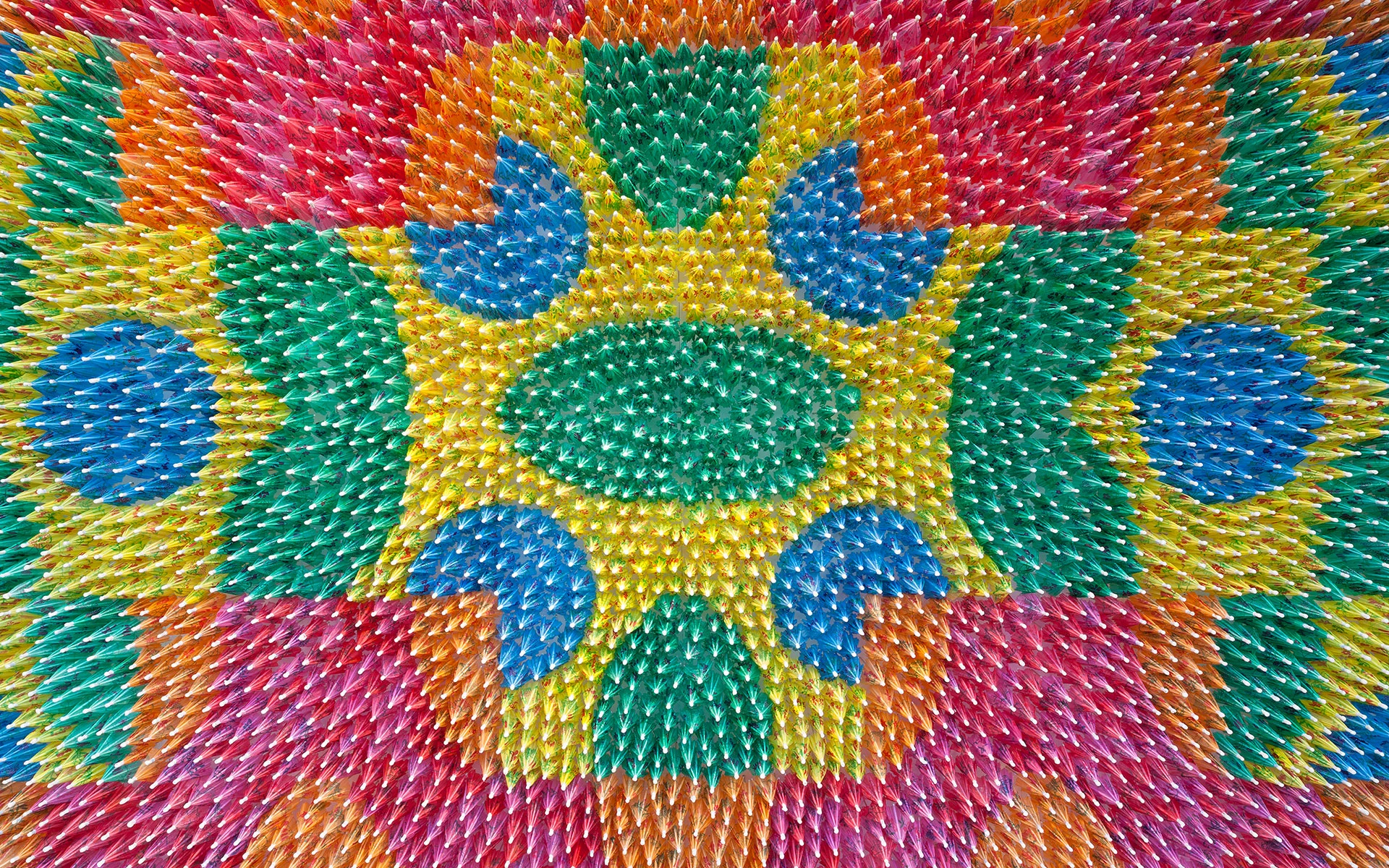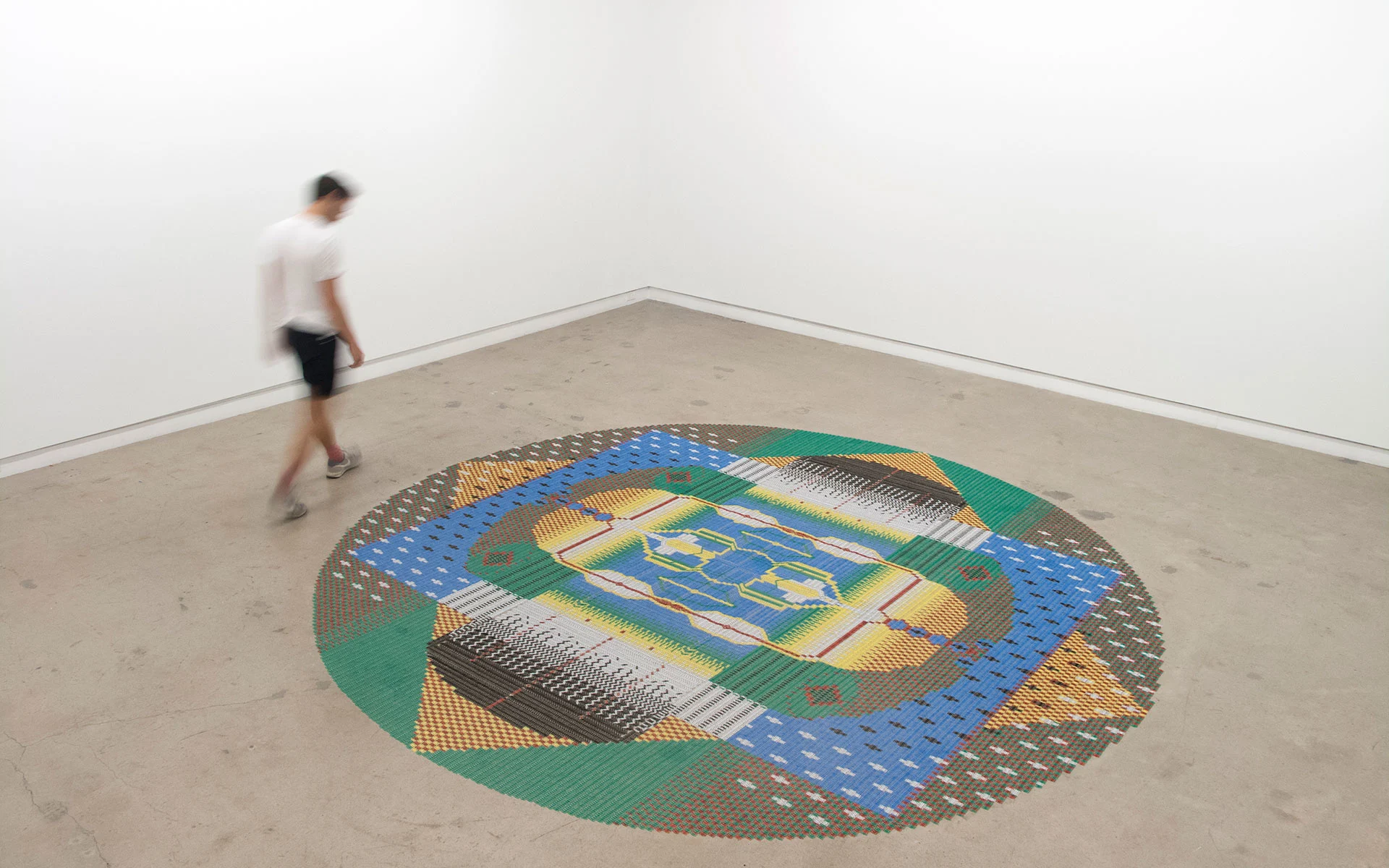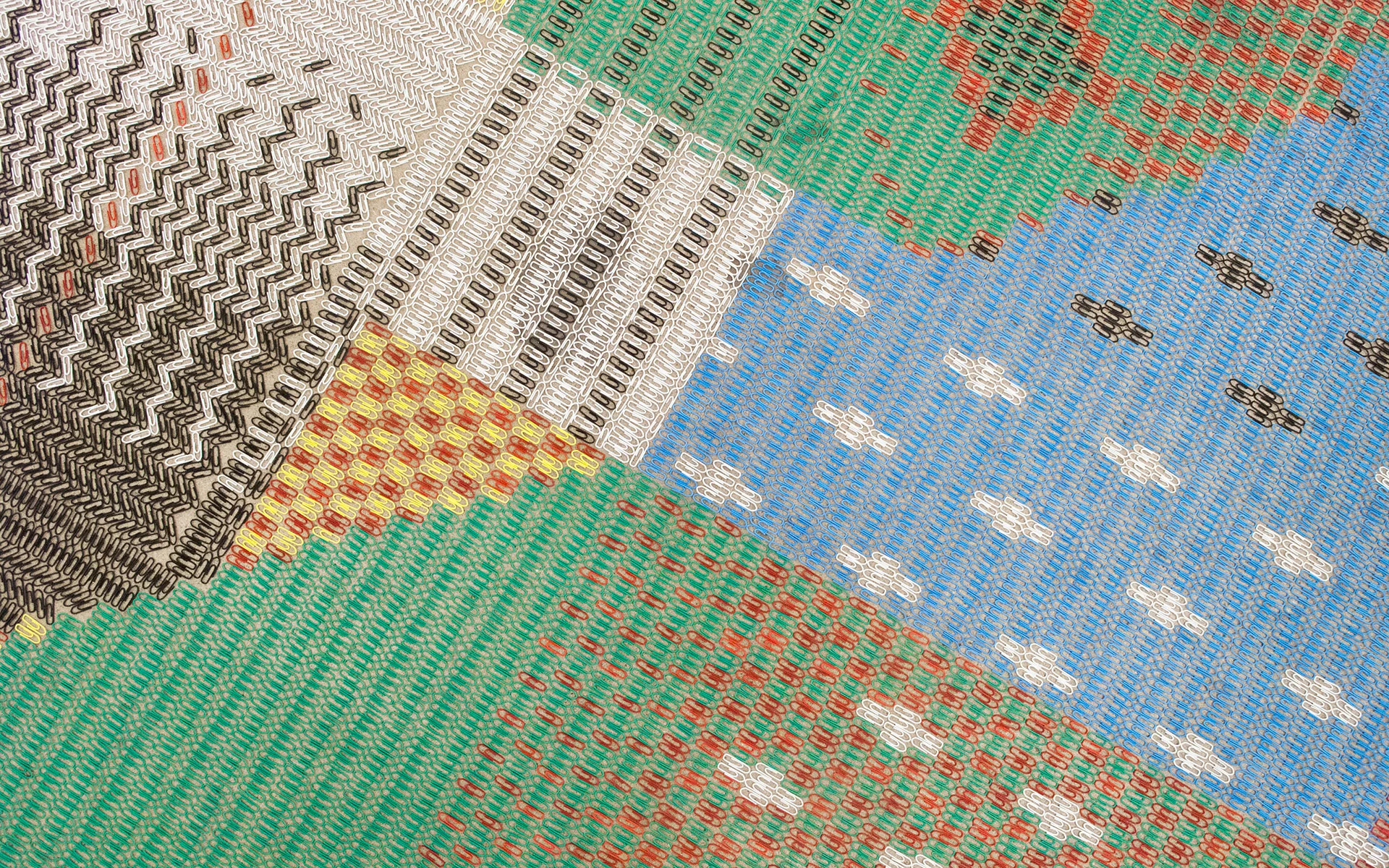

As the name suggests, Dutch collective We Make Carpets make carpets. But these aren’t the kind that painstakingly color-match with our new sofas. Made from everyday objects like forks, buttons, staples, matches, cocktail umbrellas and paperclips, their site-specific artworks can be considered contemporary interpretations of a centuries-old craft that celebrate mass industry and beautify the ordinary.
Designers Marcia Nolte, Stijn van der Vleuten and artist Bob Waardenburg first collaborated on an installation for the Dutch Design Awards in 2009. Called Forest Carpet, they arranged materials found in the woods, like leaves, pinecones, twigs and acorns into a striking symmetrical pattern that resembled a decorative rug. It was during this process that they realized they shared “an interest in everyday materials, production processes and repetition.”
Since then, the trio has found a way to weave together their talents in a seamless manner. “Marcia loves creating works that have the look of textile, combining interesting structures and textures, while Stijn is really precise and can’t live without his ruler. Bob is the mastermind behind We Make Carpets, deciding what we do and where we’re going,” the group explains.

Their installations take shape in a process of collaborative assembly; while they decide on the materials and dimensions before they start, the rest of the process is based on intuition. “We improvise on the color, shape, texture and even the pattern. It takes trust and courage to let someone else improvise on this level, to know when to take over or to let someone else take the lead.”
Responding to the spaces in which they are placed, each installation is different. Yet there’s a common thread in their work – all materials they use are mass-produced. “We want people to take a closer look at the objects we’re surrounded with in our daily lives, and to become aware of the fact that someone designed this for you, not just as a functional object but also to make your life just a little bit more beautiful.”

Whether it’s the 6,000 cocktail umbrellas that made up the dizzyingly bright Room on the Roof at the Stedelijk Museum in Amsterdam, or the 65,000 paperclips that were methodically arranged to create Paperclip Carpet 2 for the Diagonale in Montréal, Canada, their pieces are a thought-provoking combination of product, process and place.
Though the installations are regarded as artworks and presented as such in exhibition spaces, it’s not unusual to see a hand reach out across the space to feel the prick of the cocktail umbrella or the roughness of a rubber band. “Because the materials we use are so recognizable, people don’t regard them as fragile. It’s like people want to touch them just to be sure.”
Something magical happens when these everyday objects are identified, like the truth unravels before people’s eyes and the collective’s secrets are exposed to the public.
There’s a weird beauty in people accidentally destroying one of our works. It’s as if the whole concept becomes clear to them in a split second: Eureka!



